Twisting and cracking your back is a common practice for many people to relieve back pain. However, twisting to crack your back while pregnant can be risky and potentially harmful. Understanding the impact of twisting and cracking your back while pregnant is crucial to ensure the safety of both the mother and the baby.
During pregnancy, the body undergoes several changes that can lead to back pain. The weight gain, changes in posture, and the hormone relaxin can all contribute to discomfort. While twisting and cracking your back may provide temporary relief, it can also cause more harm than good. The impact of twisting and cracking your back while pregnant can range from muscle strain to serious complications such as premature labor.
Key Takeaways
- Twisting and cracking your back while pregnant can be risky and potentially harmful.
- The hormone relaxin can contribute to back pain during pregnancy.
- Safe alternatives and professional help are available for back pain relief during pregnancy.
Understanding Pregnancy and Back Pain
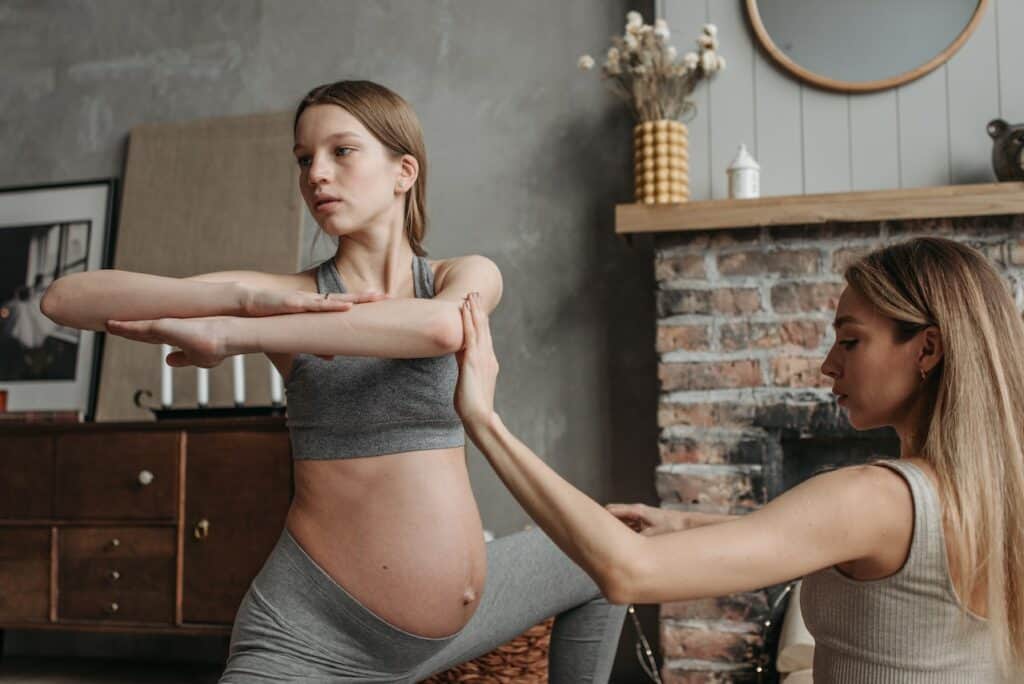
Pregnancy is an exciting time for many women, but it can also come with its fair share of discomforts, including back pain. In fact, up to 80% of pregnant women experience some form of back pain during their pregnancy.
Back pain during pregnancy is typically located in the lower back and can be caused by a variety of factors, including hormonal changes, weight gain, and muscle separation.
Hormonal changes during pregnancy can cause ligaments and joints to become more relaxed and loose, which can lead to hypermobility and joint pain. Additionally, the weight gain that comes with pregnancy can put extra pressure on the lower back, leading to pain and discomfort.
Another common cause of back pain during pregnancy is muscle separation, also known as diastasis recti. This occurs when the abdominal muscles separate due to the growing uterus, which can lead to lower back pain.
Sciatica, a condition where the sciatic nerve becomes compressed or irritated, can also cause back pain during pregnancy.
It’s important for pregnant women to understand that twisting or cracking their back to alleviate pain may not be the best solution. In fact, it’s recommended that pregnant women avoid any movements that could potentially harm them or their baby.
Instead, pregnant women should focus on gentle stretches and exercises that can help alleviate back pain, such as pelvic tilts, cat-cow stretches, and prenatal yoga. Additionally, using a pregnancy pillow or support belt can help alleviate pressure on the lower back.
Overall, understanding the causes of back pain during pregnancy and taking steps to alleviate it can help pregnant women have a more comfortable and enjoyable pregnancy.
The Impact of Twisting and Cracking Your Back
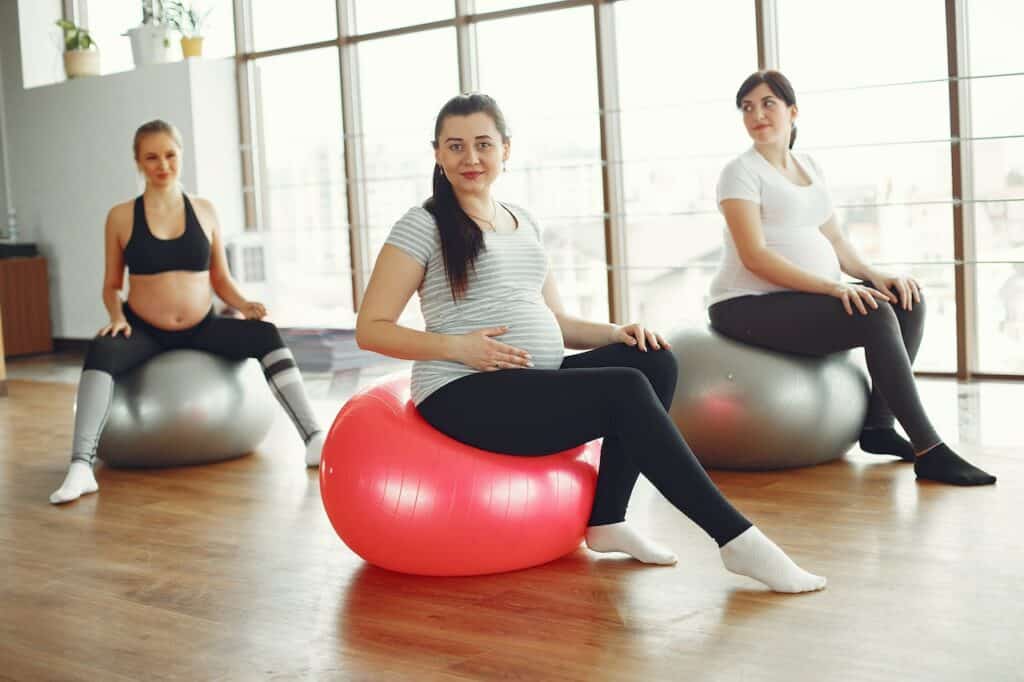
Twisting and cracking your back is a common practice that many people use to relieve back pain or discomfort. However, when you are pregnant, it is important to consider the potential impact that this practice may have on both you and your baby.
Cracking your back involves manipulating your spine in a way that creates a cracking or popping sound. This sound is caused by the release of gas bubbles that have built up in the joints of your spine. While some people find this practice to be helpful in relieving pain or tension, it is important to be aware of the potential risks.
When you are pregnant, your body undergoes significant changes that can affect the health and safety of your baby. Twisting and cracking your back can put additional strain on your spine and may cause injury or damage to your baby. It is important to consult with your doctor before attempting any type of back manipulation during pregnancy.
Is it safe to crack your back while pregnant? The answer to this question is not straightforward. While some women may be able to safely crack their back during pregnancy, others may be at increased risk for injury or complications. It is important to discuss your individual situation with your doctor to determine if twisting and cracking your back is safe for you and your baby.
In addition, if you have arthritis or other joint conditions, twisting and cracking your back may exacerbate your symptoms and cause additional pain or discomfort. It is important to discuss any pre-existing conditions with your doctor before attempting any type of back manipulation.
Overall, while twisting and cracking your back may provide temporary relief from back pain or discomfort, it is important to consider the potential risks and consult with your doctor before attempting this practice during pregnancy.
Role of Relaxin in Pregnancy and Back Pain
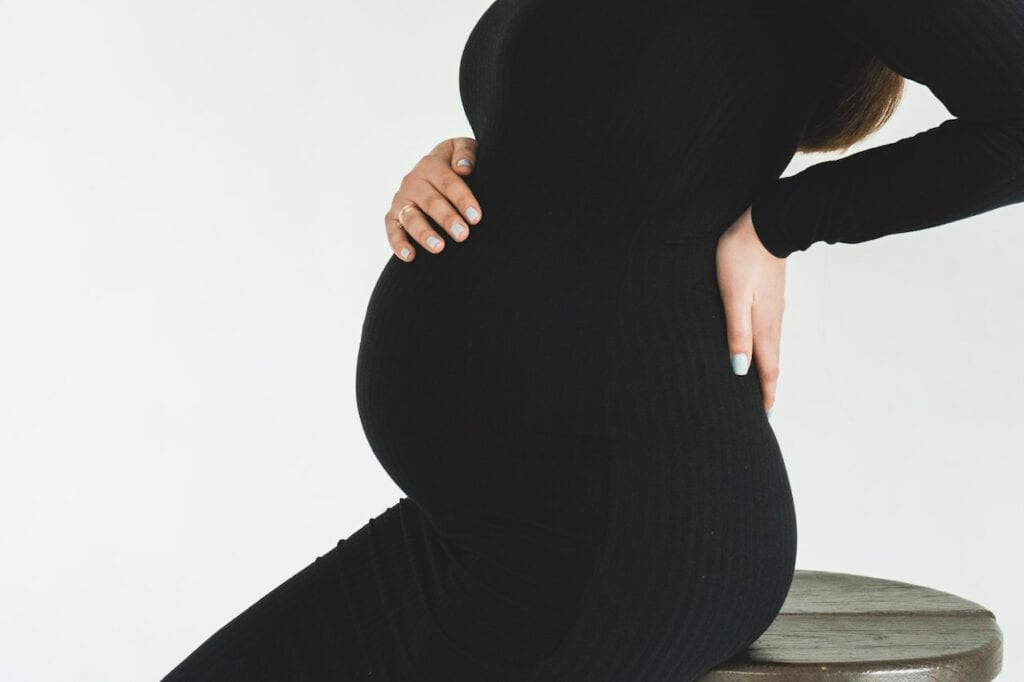
During pregnancy, the hormone relaxin is produced by the placenta and ovaries. This hormone is responsible for relaxing the ligaments in the pelvis to prepare for childbirth. However, it also affects other joints in the body, including those in the spine.
Relaxin causes the ligaments and muscles in the back to become more flexible, which can lead to instability in the spine. This can result in back pain or discomfort, especially in the later stages of pregnancy when the baby’s weight puts more pressure on the spine.
It is important to note that not all pregnant women experience back pain, and the severity can vary. However, those who do experience back pain may find relief through gentle stretching or exercise.
It is also important to be cautious when attempting to crack the back during pregnancy. Twisting or bending in certain ways can put too much pressure on the spine and potentially cause injury. It is recommended to consult with a healthcare provider before attempting any new exercises or stretches during pregnancy.
Overall, relaxin plays a significant role in pregnancy and can contribute to back pain. However, with proper care and caution, pregnant women can find relief and maintain a healthy spine.
Safe Alternatives to Cracking Your Back

Pregnancy can be accompanied by a number of aches and pains, including back pain. While some people may find relief from twisting or cracking their back, it is not recommended during pregnancy due to the potential risks involved. Fortunately, there are several safe alternatives that can help alleviate back pain without putting the health of the baby at risk.
Yoga and Prenatal Yoga
Yoga is a low-impact exercise that can help improve flexibility, strengthen muscles, and reduce stress. Prenatal yoga is specifically designed for pregnant women and can help improve posture, reduce back pain, and prepare the body for childbirth. Some yoga poses that can be beneficial for back pain during pregnancy include:
- Cat-Cow Pose
- Standing Pelvic Tilt
- Lower Back Rotation
Gentle Stretches
Gentle stretching can help improve flexibility and relieve tension in the back muscles. Some stretches that can be beneficial for pregnant women include:
- Seated Forward Bend
- Seated Spinal Twist
- Child’s Pose
Light Exercises
Light exercises such as walking, swimming, and cycling can help improve circulation, reduce stress, and strengthen muscles. Swimming, in particular, can be beneficial for pregnant women as it is a low-impact exercise that can help reduce pressure on the joints.
Foam Roller
Using a foam roller can help relieve tension in the back muscles and improve flexibility. It is important to use a soft foam roller and avoid putting pressure on the lower back during pregnancy.
Overall, there are many safe alternatives to twisting or cracking your back during pregnancy. It is important to consult with a healthcare provider before starting any new exercise program and to listen to your body to avoid overexertion.
Professional Help for Back Pain Relief
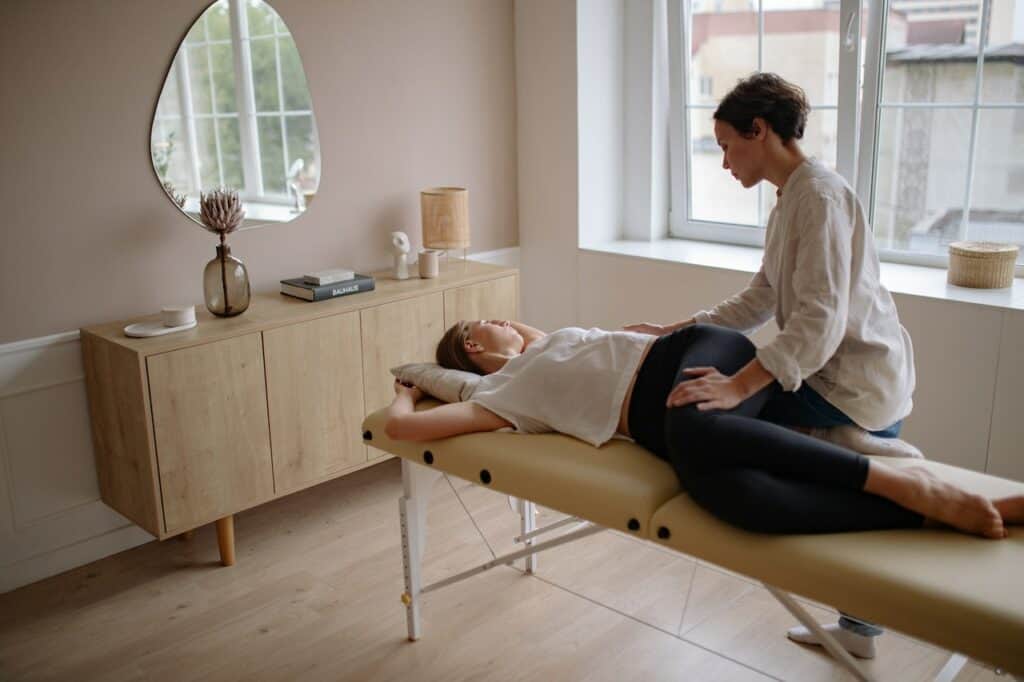
While twisting to crack your back may provide temporary relief, it is important to seek professional help for long-term relief of back pain during pregnancy. Here are some options to consider:
Chiropractor
A chiropractor can provide safe and effective care during pregnancy. Chiropractic adjustments can help relieve back pain by realigning the spine and improving joint mobility. It is important to find a chiropractor who has experience working with pregnant women and uses techniques that are safe during pregnancy.
Prenatal Massage
Prenatal massage can be a soothing and relaxing way to relieve back pain during pregnancy. A trained prenatal massage therapist can help alleviate muscle tension and improve circulation. It is important to find a massage therapist who has experience working with pregnant women and uses techniques that are safe during pregnancy.
It is important to note that certain types of massage, such as deep tissue massage, should be avoided during pregnancy. Always consult with your healthcare provider before starting any new treatment.
Overall, seeking professional help for back pain during pregnancy can provide safe and effective relief. It is important to find a provider who has experience working with pregnant women and uses techniques that are safe during pregnancy.
Importance of Good Posture
Good posture is crucial during pregnancy. When a woman is pregnant, her body undergoes various changes, which can affect her posture. As the belly grows, the center of gravity shifts forward, causing the lower back to arch more than usual. This can lead to lower back pain and discomfort.
Maintaining good posture during pregnancy can help reduce the risk of back pain and other discomforts. Good posture also helps to keep the body in balance, which is essential for overall health and well-being.
Here are some tips for maintaining good posture during pregnancy:
- Stand up straight with your shoulders back and your chest out.
- Keep your feet shoulder-width apart and distribute your weight evenly on both feet.
- Avoid standing for long periods of time. If you have to stand for a long time, take breaks and shift your weight from one foot to the other.
- When sitting, use a chair with good back support. Keep your feet flat on the floor and avoid crossing your legs.
- Use a pillow to support your lower back when sitting or driving.
- When lifting objects, bend your knees and keep your back straight.
By maintaining good posture during pregnancy, women can help reduce the risk of back pain and other discomforts. Good posture also helps to keep the body in balance, which is essential for overall health and well-being.
Managing Stress and Back Pain
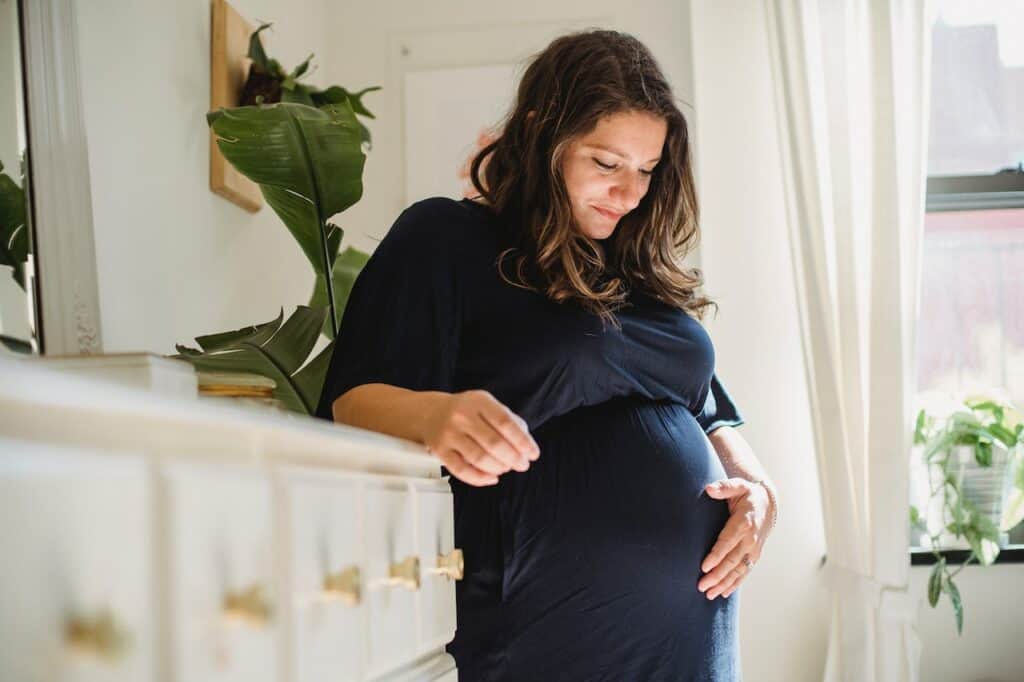
Pregnancy can be a stressful time for women, and stress can lead to back pain. Managing stress is important not only for mental health but also for physical well-being. Here are some tips for managing stress and back pain during pregnancy:
- Practice relaxation techniques such as deep breathing, meditation, and yoga.
- Get enough sleep and rest. Fatigue can exacerbate stress and back pain.
- Exercise regularly with low-impact activities such as walking, swimming, or prenatal yoga. Exercise can help reduce stress and strengthen the muscles that support the back.
- Maintain good posture. Slouching can strain the back muscles and exacerbate pain.
- Use heat or cold therapy to alleviate pain. A warm compress or a heating pad can help relax muscles, while a cold compress can reduce inflammation.
- Seek support from friends, family, or a therapist. Talking about stressors can help alleviate the burden and provide emotional support.
It is important to consult with a healthcare provider before trying any new treatment or exercise regimen, especially during pregnancy. With proper management, stress and back pain can be minimized, allowing women to enjoy a healthy and comfortable pregnancy.
Potential Risks and Complications
While twisting to crack your back may provide temporary relief from back pain during pregnancy, it is important to be aware of potential risks and complications.
One of the main concerns is the risk of vaginal bleeding. Twisting movements can put pressure on the cervix and cause bleeding, which can be a sign of a serious complication such as placenta previa or abruptio placenta. If you experience any vaginal bleeding during or after twisting, it is important to seek medical attention immediately.
Another potential risk is toxemia, also known as preeclampsia. This is a serious condition that can develop during pregnancy and is characterized by high blood pressure, protein in the urine, and swelling of the hands and feet. Twisting movements can increase blood pressure and exacerbate symptoms of toxemia. If you have been diagnosed with preeclampsia, it is important to avoid twisting movements and other activities that may increase blood pressure.
It is also important to note that twisting movements can put strain on the abdominal muscles and pelvic floor, which can lead to discomfort and even injury. This is especially true during the later stages of pregnancy when the abdominal muscles are stretched and weakened.
Overall, while twisting to crack your back may provide temporary relief from back pain, it is important to be aware of the potential risks and complications. If you experience any discomfort or unusual symptoms during or after twisting, it is important to seek medical attention immediately.
Nutritional Support for Back Pain

Proper nutrition is essential for overall health, and it can also play a significant role in managing back pain during pregnancy. Here are some nutrients that can help support a healthy back:
Calcium
Calcium is essential for building strong bones and maintaining bone health. Pregnant women need 1,000-1,300 mg of calcium per day, depending on their age and stage of pregnancy. Good sources of calcium include dairy products, leafy green vegetables, and fortified foods.
Vitamin D
Vitamin D is necessary for the body to absorb calcium properly. Pregnant women need 600-800 IU of vitamin D per day. Good sources of vitamin D include fatty fish, egg yolks, and fortified foods. However, it’s challenging to get enough vitamin D from food alone, so many pregnant women may need to take a supplement.
Magnesium
Magnesium is essential for muscle and nerve function, and it can also help relax muscles and reduce pain. Pregnant women need 350-360 mg of magnesium per day. Good sources of magnesium include nuts, seeds, whole grains, and leafy green vegetables.
Omega-3 Fatty Acids
Omega-3 fatty acids are anti-inflammatory and can help reduce pain and inflammation in the body. Pregnant women should aim to consume at least 200-300 mg of DHA per day. Good sources of omega-3 fatty acids include fatty fish, flaxseed, and chia seeds.
Vitamin B12
Vitamin B12 is necessary for nerve function and can help reduce pain and inflammation. Pregnant women need 2.6 mcg of vitamin B12 per day. Good sources of vitamin B12 include dairy products, eggs, meat, and fortified foods.
Incorporating these nutrients into a healthy, balanced diet can help support a healthy back during pregnancy. However, it’s always best to consult with a healthcare provider before making any significant changes to your diet or supplement regimen.
Conclusion
In conclusion, twisting to crack your back while pregnant can provide temporary relief for some women experiencing back pain. However, it is important to be cautious and listen to your body during pregnancy.
While twisting may feel good in the moment, it is important to remember that pregnancy hormones can loosen ligaments and joints, leading to increased risk of injury. Additionally, twisting can put pressure on the uterus and potentially harm the developing fetus.
It is recommended that pregnant women consult with their healthcare provider before attempting any new exercise or stretching routine. Your healthcare provider can help determine if twisting is safe for you and provide alternative methods for relieving back pain during pregnancy.
Overall, while twisting to crack your back may provide temporary relief, it is important to prioritize the health and safety of both you and your growing baby during pregnancy.
Related posts:
Frequently Asked Questions
Is it safe to twist your back while pregnant?
Twisting your back during pregnancy can be safe if done correctly and with caution. However, it is always best to consult with a healthcare provider before attempting any new exercises or movements during pregnancy.
How can I relieve back pain during pregnancy?
There are several ways to relieve back pain during pregnancy, including prenatal yoga, swimming, and prenatal massage. It is important to consult with a healthcare provider before starting any new exercise routine.
What are the risks of cracking your back while pregnant?
Cracking your back while pregnant can potentially cause harm to both you and your baby. It is best to avoid any sudden or forceful movements that could potentially harm yourself or your baby.
What exercises can I do to relieve back pain while pregnant?
There are several exercises that can help relieve back pain during pregnancy, including pelvic tilts, cat-cow stretches, and seated spinal twists. It is important to consult with a healthcare provider before starting any new exercise routine.
Can I crack my neck while pregnant?
Cracking your neck while pregnant can potentially cause harm to both you and your baby. It is best to avoid any sudden or forceful movements that could potentially harm yourself or your baby.
Are Russian twists safe during pregnancy?
Russian twists can be safe during pregnancy if done correctly and with caution. However, it is always best to consult with a healthcare provider before attempting any new exercises or movements during pregnancy.

Iesha is a loving mother of 2 beautiful children. She’s an active parent who enjoys indoor and outdoor adventures with her family. Her mission is to share practical and realistic parenting advice to help the parenting community becoming stronger.
